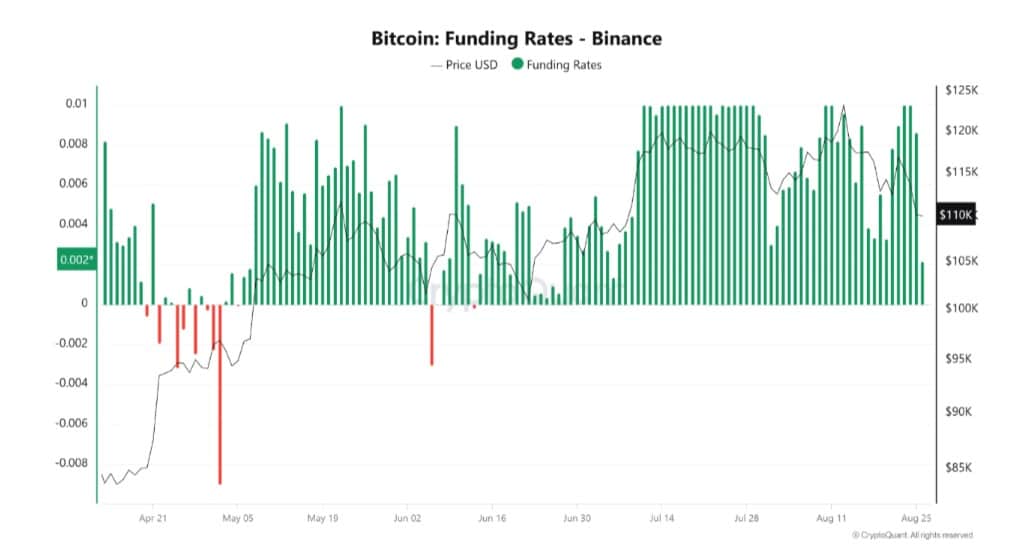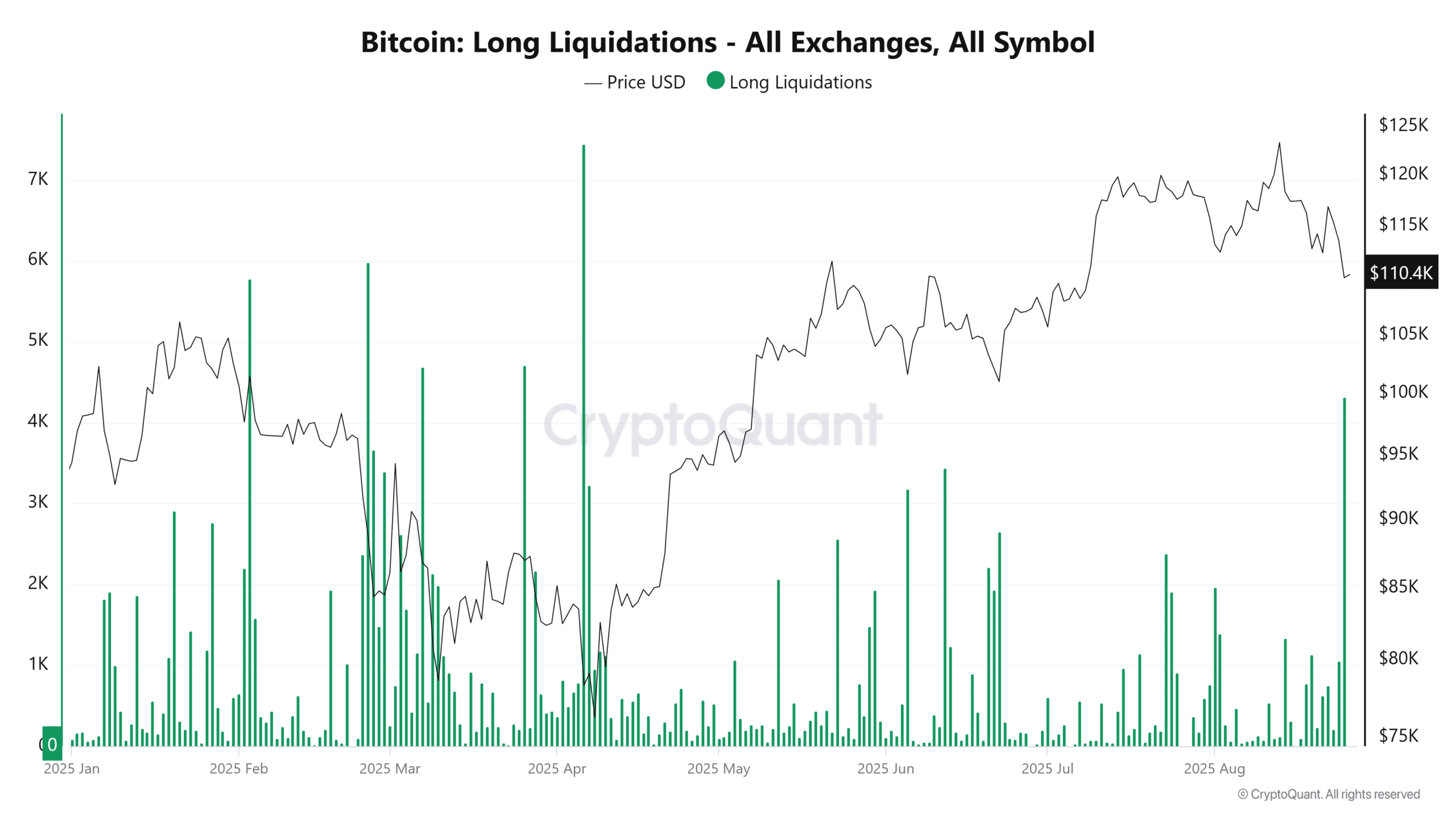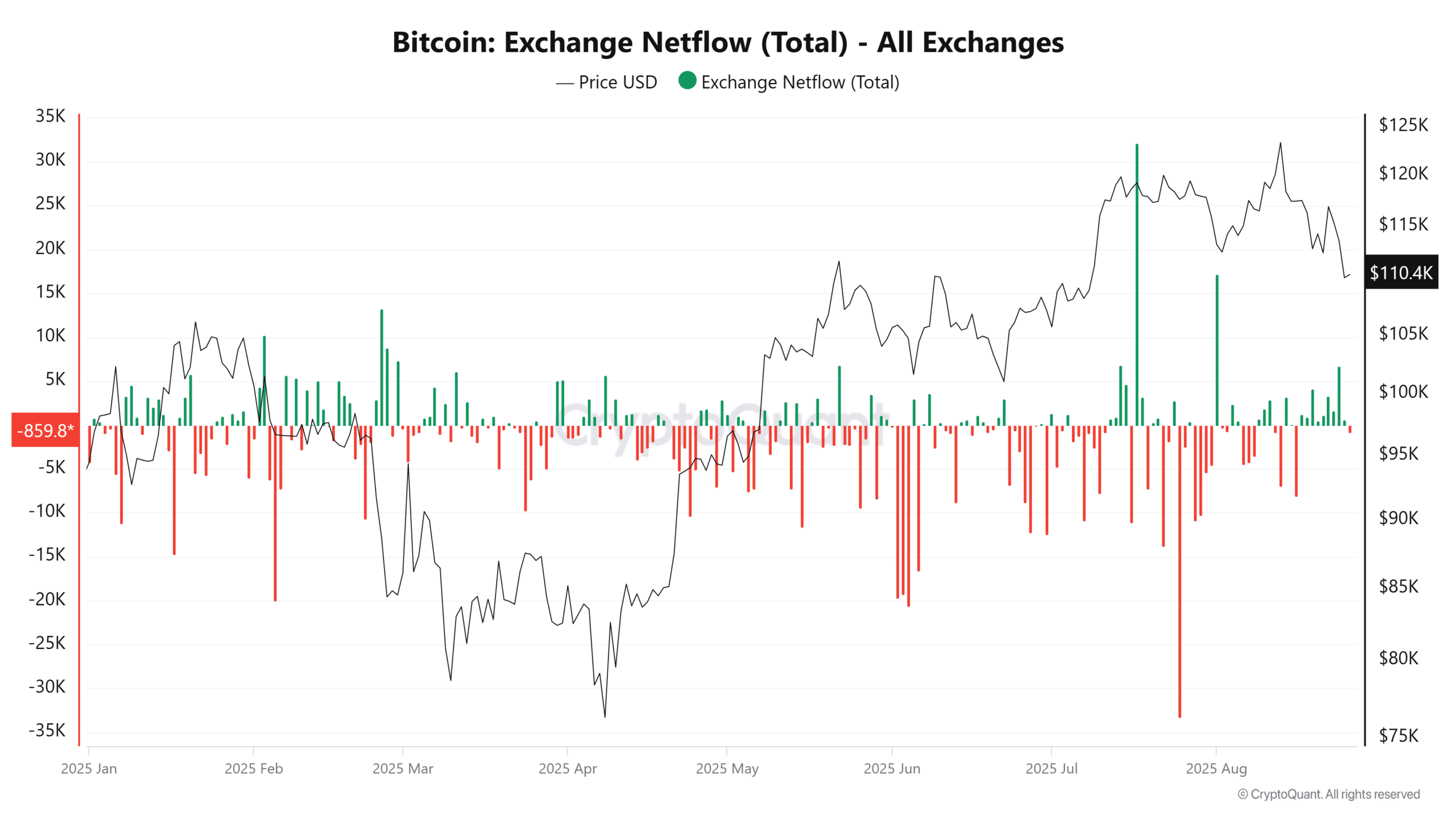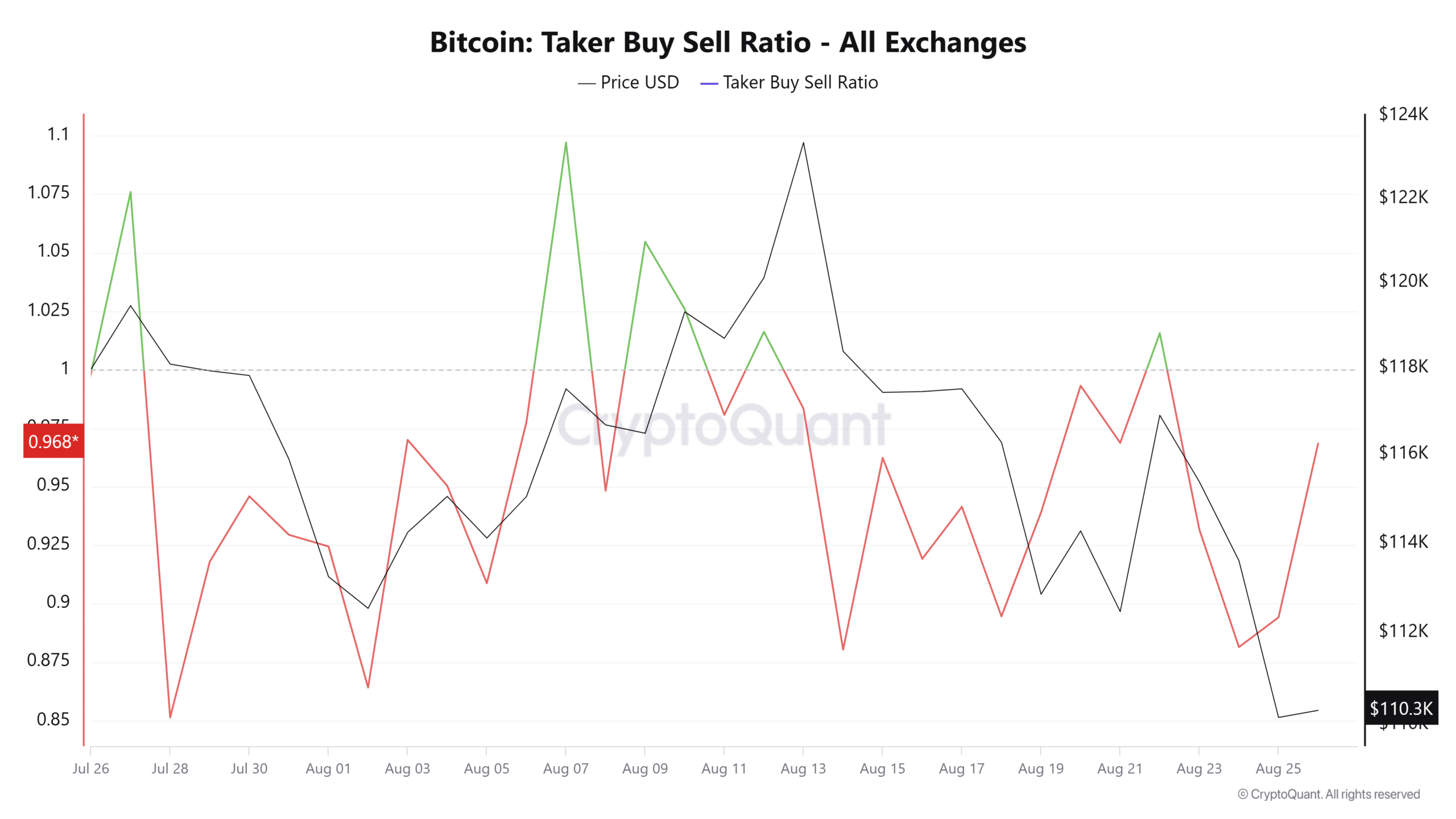| COINOTAG recommends • Exchange signup |
| 💹 Trade with pro tools |
| Fast execution, robust charts, clean risk controls. |
| 👉 Open account → |
| COINOTAG recommends • Exchange signup |
| 🚀 Smooth orders, clear control |
| Advanced order types and market depth in one view. |
| 👉 Create account → |
| COINOTAG recommends • Exchange signup |
| 📈 Clarity in volatile markets |
| Plan entries & exits, manage positions with discipline. |
| 👉 Sign up → |
| COINOTAG recommends • Exchange signup |
| ⚡ Speed, depth, reliability |
| Execute confidently when timing matters. |
| 👉 Open account → |
| COINOTAG recommends • Exchange signup |
| 🧭 A focused workflow for traders |
| Alerts, watchlists, and a repeatable process. |
| 👉 Get started → |
| COINOTAG recommends • Exchange signup |
| ✅ Data‑driven decisions |
| Focus on process—not noise. |
| 👉 Sign up → |
Bitcoin funding rates on Binance stayed elevated through August, keeping traders in leveraged longs despite price weakness and leading to roughly $477.5M in long liquidations that pushed BTC toward $108k—an imbalance between futures optimism and spot selling that raises downside risk unless spot demand returns.
-
Funding rates on Binance remained positive and high, signaling sustained leveraged long exposure.
-
Long liquidations reached a four‑month peak of ~4.3k BTC, equivalent to roughly $477.5M, amplifying short‑term selling pressure.
-
Spot inflows to exchanges increased, indicating spot sellers were closing positions even as futures buyers reloaded.
Bitcoin funding rates stayed high on Binance, triggering $477.5M in long liquidations and pushing BTC toward $108k — read implications and steps for traders.
What caused Bitcoin’s drop toward $108k?
Bitcoin funding rates on Binance stayed abnormally positive in August, encouraging leveraged longs even as the spot price fell; cascading long liquidations (about $477.5M) and increased spot exchange inflows combined to push BTC down to $108,717 before a partial rebound.
| COINOTAG recommends • Professional traders group |
| 💎 Join a professional trading community |
| Work with senior traders, research‑backed setups, and risk‑first frameworks. |
| 👉 Join the group → |
| COINOTAG recommends • Professional traders group |
| 📊 Transparent performance, real process |
| Spot strategies with documented months of triple‑digit runs during strong trends; futures plans use defined R:R and sizing. |
| 👉 Get access → |
| COINOTAG recommends • Professional traders group |
| 🧭 Research → Plan → Execute |
| Daily levels, watchlists, and post‑trade reviews to build consistency. |
| 👉 Join now → |
| COINOTAG recommends • Professional traders group |
| 🛡️ Risk comes first |
| Sizing methods, invalidation rules, and R‑multiples baked into every plan. |
| 👉 Start today → |
| COINOTAG recommends • Professional traders group |
| 🧠 Learn the “why” behind each trade |
| Live breakdowns, playbooks, and framework‑first education. |
| 👉 Join the group → |
| COINOTAG recommends • Professional traders group |
| 🚀 Insider • APEX • INNER CIRCLE |
| Choose the depth you need—tools, coaching, and member rooms. |
| 👉 Explore tiers → |
How high were funding rates and what do they mean?
CryptoQuant data showed Binance funding rates hovering near 0.005–0.008 during the decline—levels typically considered elevated. Positive funding means longs paid shorts, indicating traders were maintaining leveraged bullish positions despite weakening price action.
High positive funding commonly precedes volatility: if price drops, leveraged longs face liquidation, which can trigger rapid downward moves as positions are forced closed.
| COINOTAG recommends • Exchange signup |
| 📈 Clear interface, precise orders |
| Sharp entries & exits with actionable alerts. |
| 👉 Create free account → |
| COINOTAG recommends • Exchange signup |
| 🧠 Smarter tools. Better decisions. |
| Depth analytics and risk features in one view. |
| 👉 Sign up → |
| COINOTAG recommends • Exchange signup |
| 🎯 Take control of entries & exits |
| Set alerts, define stops, execute consistently. |
| 👉 Open account → |
| COINOTAG recommends • Exchange signup |
| 🛠️ From idea to execution |
| Turn setups into plans with practical order types. |
| 👉 Join now → |
| COINOTAG recommends • Exchange signup |
| 📋 Trade your plan |
| Watchlists and routing that support focus. |
| 👉 Get started → |
| COINOTAG recommends • Exchange signup |
| 📊 Precision without the noise |
| Data‑first workflows for active traders. |
| 👉 Sign up → |
How large were the liquidations and who reported them?
Long liquidations across exchanges hit a four‑month high of roughly 4.3k BTC, amounting to about $477.5 million in notional long positions. This data was reported by on‑chain and derivatives trackers, and it coincided with Bitcoin momentarily testing lows near $108k.
These liquidations deepened the sell pressure and briefly amplified volatility across crypto markets.
| COINOTAG recommends • Traders club |
| ⚡ Futures with discipline |
| Defined R:R, pre‑set invalidation, execution checklists. |
| 👉 Join the club → |
| COINOTAG recommends • Traders club |
| 🎯 Spot strategies that compound |
| Momentum & accumulation frameworks managed with clear risk. |
| 👉 Get access → |
| COINOTAG recommends • Traders club |
| 🏛️ APEX tier for serious traders |
| Deep dives, analyst Q&A, and accountability sprints. |
| 👉 Explore APEX → |
| COINOTAG recommends • Traders club |
| 📈 Real‑time market structure |
| Key levels, liquidity zones, and actionable context. |
| 👉 Join now → |
| COINOTAG recommends • Traders club |
| 🔔 Smart alerts, not noise |
| Context‑rich notifications tied to plans and risk—never hype. |
| 👉 Get access → |
| COINOTAG recommends • Traders club |
| 🤝 Peer review & coaching |
| Hands‑on feedback that sharpens execution and risk control. |
| 👉 Join the club → |
Why did derivatives and spot markets diverge?
Derivatives markets showed sustained demand for leveraged longs, while spot investors increasingly routed coins to exchanges—recorded as positive exchange netflow from Aug 17–25 (with Aug 26 as an exception). This divergence indicated speculative futures exposure versus real spot selling.
When futures buyers keep adding leverage as spot holders sell, the resulting imbalance magnifies the risk of cascading liquidations and sharper declines.

Source: CryptoQuant
| COINOTAG recommends • Exchange signup |
| 📈 Clear control for futures |
| Sizing, stops, and scenario planning tools. |
| 👉 Open futures account → |
| COINOTAG recommends • Exchange signup |
| 🧩 Structure your futures trades |
| Define entries & exits with advanced orders. |
| 👉 Sign up → |
| COINOTAG recommends • Exchange signup |
| 🛡️ Control volatility |
| Automate alerts and manage positions with discipline. |
| 👉 Get started → |
| COINOTAG recommends • Exchange signup |
| ⚙️ Execution you can rely on |
| Fast routing and meaningful depth insights. |
| 👉 Create account → |
| COINOTAG recommends • Exchange signup |
| 📒 Plan. Execute. Review. |
| Frameworks for consistent decision‑making. |
| 👉 Join now → |
| COINOTAG recommends • Exchange signup |
| 🧩 Choose clarity over complexity |
| Actionable, pro‑grade tools—no fluff. |
| 👉 Open account → |
What were price moves and market reactions?
After rejection at $117k four days earlier, BTC slid to $108,717 and traded around $110,197 at press time — a ~2.04% 24‑hour decline. Some traders bought the dip, lifting the taker buy/sell ratio from 0.89 to 0.96, signaling incremental buyer participation on derivatives.
What does the taker buy/sell ratio indicate now?
A rising taker buy/sell ratio suggests buyers are absorbing more market flow, which can dampen selling pressure. However, if buyers open more leveraged longs while the price declines, the liquidation risk remains elevated until spot demand provides durable support.
| COINOTAG recommends • Members‑only research |
| 📌 Curated setups, clearly explained |
| Entry, invalidation, targets, and R:R defined before execution. |
| 👉 Get access → |
| COINOTAG recommends • Members‑only research |
| 🧠 Data‑led decision making |
| Technical + flow + context synthesized into actionable plans. |
| 👉 Join now → |
| COINOTAG recommends • Members‑only research |
| 🧱 Consistency over hype |
| Repeatable rules, realistic expectations, and a calmer mindset. |
| 👉 Get access → |
| COINOTAG recommends • Members‑only research |
| 🕒 Patience is an edge |
| Wait for confirmation and manage risk with checklists. |
| 👉 Join now → |
| COINOTAG recommends • Members‑only research |
| 💼 Professional mentorship |
| Guidance from seasoned traders and structured feedback loops. |
| 👉 Get access → |
| COINOTAG recommends • Members‑only research |
| 🧮 Track • Review • Improve |
| Documented PnL tracking and post‑mortems to accelerate learning. |
| 👉 Join now → |
How can traders limit liquidation risk?
Practical steps to reduce forced exits and manage risk:
- Reduce leverage to decrease liquidation probability during sharp moves.
- Use position sizing and stop orders to limit downside exposure.
- Monitor exchange funding rates and netflow indicators for sentiment shifts.
- Prefer spot accumulation over leveraged futures when spot selling dominates.

| COINOTAG recommends • Exchange signup |
| 🎯 Focus on process over noise |
| Plan trades, size positions, execute consistently. |
| 👉 Sign up → |
| COINOTAG recommends • Exchange signup |
| 🛠️ Simplify execution |
| Keep decisions clear with practical controls. |
| 👉 Get started → |
| COINOTAG recommends • Exchange signup |
| 📊 Make data your edge |
| Use depth and alerts to avoid guesswork. |
| 👉 Open account → |
| COINOTAG recommends • Exchange signup |
| 🧭 Be prepared, not reactive |
| Turn setups into rules before you trade. |
| 👉 Create account → |
| COINOTAG recommends • Exchange signup |
| ✍️ Plan first, then act |
| Entries, exits, and reviews that fit your routine. |
| 👉 Join now → |
| COINOTAG recommends • Exchange signup |
| 🧩 Consistency beats intensity |
| Small, repeatable steps win the long run. |
| 👉 Sign up → |
Source: CryptoQuant
What should watchers look for next?
Key indicators to watch:
| COINOTAG recommends • Premium trading community |
| 🏛️ WAGMI CAPITAL — Premium Trading Community |
| Strategic insights, exclusive opportunities, professional support. |
| 👉 Join WAGMI CAPITAL → |
| COINOTAG recommends • Premium trading community |
| 💬 Inner Circle access |
| See members share real‑time PnL and execution notes in chat. |
| 👉 Apply for Inner Circle → |
| COINOTAG recommends • Premium trading community |
| 🧩 Turn theses into trades |
| Reusable templates for entries, risk, and review—end to end. |
| 👉 Join the club → |
| COINOTAG recommends • Premium trading community |
| 💡 Long‑term mindset |
| Patience and discipline over noise; a process that compounds. |
| 👉 Get started → |
| COINOTAG recommends • Premium trading community |
| 📚 Education + execution |
| Courses, playbooks, and live market walkthroughs—learn by doing. |
| 👉 Get access → |
| COINOTAG recommends • Premium trading community |
| 🔒 Members‑only research drops |
| Curated analyses and private briefings—quality over quantity. |
| 👉 Join WAGMI CAPITAL → |
- Spot exchange netflow — rising inflows often precede additional selling.
- Funding rate trends — falling/negative funding can relieve long-side pressure.
- Long liquidation volumes — renewed spikes indicate continued forced selling.
- Taker buy/sell ratio — sustained increases can signal buyer resilience.

Source: CryptoQuant
| COINOTAG recommends • Exchange signup |
| 🧱 Execute with discipline |
| Watchlists, alerts, and flexible order control. |
| 👉 Sign up → |
| COINOTAG recommends • Exchange signup |
| 🧩 Keep your strategy simple |
| Clear rules and repeatable steps. |
| 👉 Open account → |
| COINOTAG recommends • Exchange signup |
| 🧠 Stay objective |
| Let data—not emotion—drive actions. |
| 👉 Get started → |
| COINOTAG recommends • Exchange signup |
| ⏱️ Trade when it makes sense |
| Your plan sets the timing—not the feed. |
| 👉 Join now → |
| COINOTAG recommends • Exchange signup |
| 🌿 A calm plan for busy markets |
| Set size and stops first, then execute. |
| 👉 Create account → |
| COINOTAG recommends • Exchange signup |
| 🧱 Your framework. Your rules. |
| Design entries/exits that fit your routine. |
| 👉 Sign up → |
Derivatives vs. spot: who wins in a squeeze?
Derivatives positioning can temporarily amplify moves, but durable reversals typically require spot demand. If spot sellers keep exiting and deposit to exchanges, BTC can revisit $107k or below. A sustainable recovery needs spot buyers to re-enter and absorb sell-side pressure.

Source: CryptoQuant
Frequently Asked Questions
Why did Bitcoin drop to around $108k despite positive funding?
Elevated positive funding encouraged leveraged longs while spot holders sold to exchanges. When price fell, those leveraged longs were liquidated en masse (approximately $477.5M), magnifying the decline to near $108k.
What do funding rates above 0.005 mean for traders?
Funding rates near 0.005–0.008 are high and indicate sustained long-side leverage; they raise liquidation risk if price declines, since longs pay funding and face margin calls during volatility.
How can traders protect positions during high funding and volatility?
Reduce leverage, set disciplined stops, prefer spot accumulation where possible, and monitor exchange netflow and funding rate trends to avoid being caught in forced liquidations.
Key Takeaways
- Funding imbalance: Elevated Binance funding kept leveraged longs active despite price weakness.
- Mass liquidations: ~4.3k BTC (~$477.5M) in long liquidations increased selling pressure and volatility.
- Spot support required: Durable recovery needs spot buyers to re-enter; otherwise BTC may retest $107k.
Conclusion
Elevated Bitcoin funding rates on Binance created a futures-spot mismatch that culminated in roughly $477.5M of long liquidations and a test of $108k. Traders should watch funding, exchange netflows, and taker ratios; reducing leverage and prioritizing spot accumulation can limit liquidation risk. COINOTAG will monitor updates as markets evolve.
| COINOTAG recommends • Members‑only research |
| 📌 Curated setups, clearly explained |
| Entry, invalidation, targets, and R:R defined before execution. |
| 👉 Get access → |
| COINOTAG recommends • Members‑only research |
| 🧠 Data‑led decision making |
| Technical + flow + context synthesized into actionable plans. |
| 👉 Join now → |
| COINOTAG recommends • Members‑only research |
| 🧱 Consistency over hype |
| Repeatable rules, realistic expectations, and a calmer mindset. |
| 👉 Get access → |
| COINOTAG recommends • Members‑only research |
| 🕒 Patience is an edge |
| Wait for confirmation and manage risk with checklists. |
| 👉 Join now → |
| COINOTAG recommends • Members‑only research |
| 💼 Professional mentorship |
| Guidance from seasoned traders and structured feedback loops. |
| 👉 Get access → |
| COINOTAG recommends • Members‑only research |
| 🧮 Track • Review • Improve |
| Documented PnL tracking and post‑mortems to accelerate learning. |
| 👉 Join now → |










